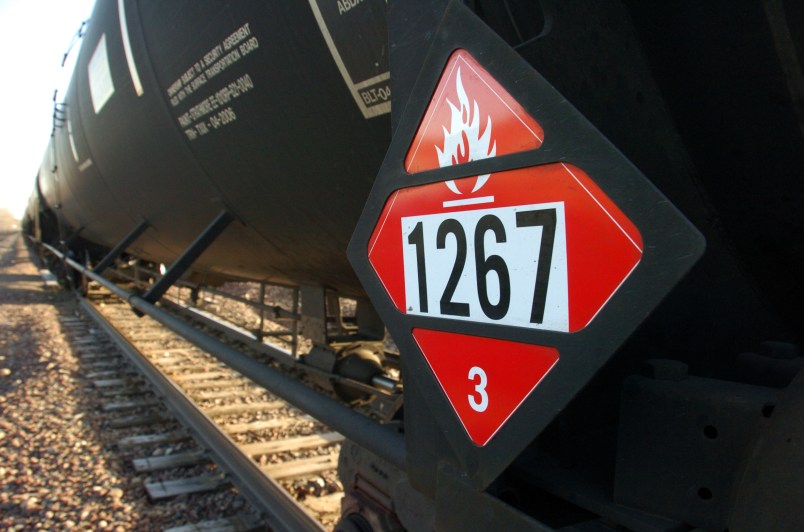Shipments of crude oil by rail have exploded by more than 8,300 percent since 2006, effectively creating a new industry where one previously didn’t exist while regulators scramble to figure out what they should do about it.
What’s happening? As the chart indicates, the United States is producing increasing quantities of crude oil — and the current pipeline infrastructure can’t support it, leaving rail as the easiest alternative.

The U.S. Energy Information Administration reported that increasing oil production in North Dakota and Texas, among other states, had overwhelmed the capacity of the existing pipelines and steered more of the crude oil to rail for transportation. A bottleneck at the oil pipeline in Cushing, Okla, a major storage hub for oil in the country, also contributed to the turn to rail, according to the EIA. In some cases, there just isn’t a pipeline to move the new oil: No major pipeline exists to transport crude oil from anywhere east of the Rocky Mountains to the West Coast.
Last week, the National Transportation Safety Board, spurred by a train derailment in Canada’s Quebec province last July, which killed more than 40 people and destroyed more than 30 buildings in the small town where it occurred, released a new report on the safety implications of this boom.

The NTSB, which participated in the investigation of the Quebec derailment, decided new safety recommendations were in order for the United States, too, where rail shipments of U.S. crude oil have skyrocketed from less than 5,000 carloads in 2006 to an estimated 400,000 in 2013.
“The large-scale shipment of crude oil by rail simply didn’t exist ten years ago, and our safety regulations need to catch up with this new reality,” NTSB Chairman Deborah A.P. Hersman said in a statement. “While this energy boom is good for business, the people and the environment along rail corridors must be protected from harm.”
The recommendations include having rail companies review the Quebec accident, review their staffing levels and conduct safety assessments of their entire system if a train is left unattended. The NTSB also urged the group that regulates the transportation of hazardous materials to expand route planning of crude oil shipments and require comprehensive spill response plans for carriers.






